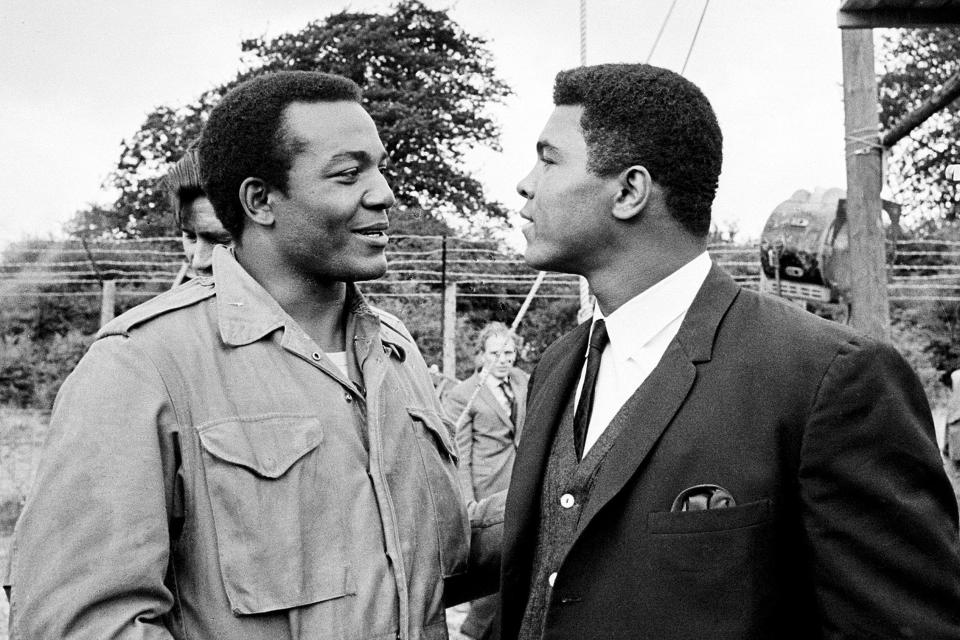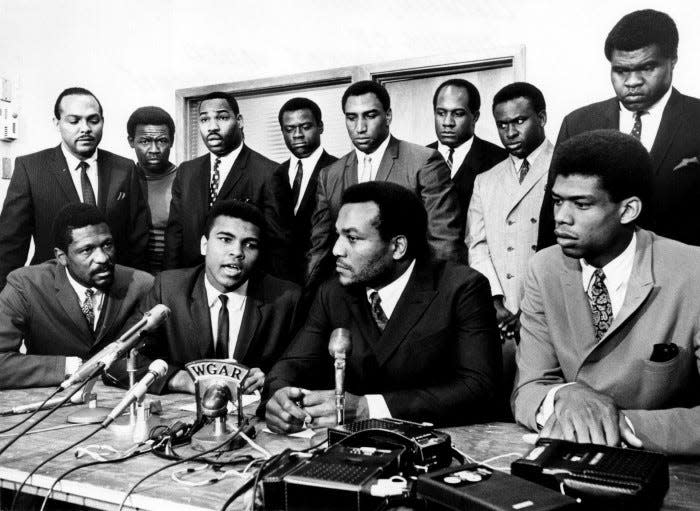Jim Brown was a Hollywood legend, an activist and highly flawed. 'I do what I want to do'
The year was 1969, so long ago, but in the history of Hollywood, it's a signature moment. Jim Brown had walked away from football at the age of 30, and not long after that was starring in a movie called "100 Rifles." In that movie, in essence, Brown had become the first Hollywood Black action hero. He starred alongside Raquel Welch, one of the huge stars at the time, and their interracial love scenes were a significant turning point in cinematic history. Nothing like that had ever been on the screen before.
He was cast as the anti-Sidney Poitier. Like in so many other aspects of his life, he could be a bully on the set, but he was also bankable. He earned $37,000 for "Rio Conchos," which was his first movie. He got $40,000 for "The Dirty Dozen" and for his movie with Welch, his eighth, he was paid $200,000 in salary and received five percent of the film's box-office gross. Those salaries at the time were high and few Black actors earned money like that. He became a millionaire not long after leaving the Cleveland Browns.
RIP Jim Brown: Social media reacts to death of Cleveland Browns legend
We know about his football career. For so long, he was viewed as the best football player ever, and that is a debate for another time, in another moment. Away from the field, he fought for the rights of Black players, for their humanity. He negotiated truces with gangs in Los Angeles. He confronted issues of race and class with the type of fearlessness few American athletes not named Ali or Jackie Robinson ever have. It was Brown who brokered the remarkable Cleveland Summit that featured Ali, Bill Russell and Lew Alcindor.
But in these moments we must also tell the truth, and the truth is, Brown at times, in real life, was the anti-hero he portrayed in the movies. A through line in his long and distinguished life is a trail of domestic abuse incidents and then, in recent years, his backing of Donald Trump which betrayed all of the work he'd done to empower Black people and defeat racism.
More on Jim Brown's death: Late Browns icon could have dominated in any era of NFL, former teammates say
You cannot discuss the life of Brown without looking at the total picture, and that picture is a kaleidoscope of barrier breaking and rules breaking; of remarkable firsts and horrid worsts; of historic feats in Hollywood, shattering racial ceilings, as well as the spirits of the women he physically abused over the years. Brown was everything. Brown was galactic. Brown was awful. Brown was beautiful. Mostly, Brown was unapologetically himself, for better and worse, and that fact made him a block of cement that could not be broken.

It's fitting the only thing that could stop Brown is death. Nothing else could. He wouldn't allow it because his will was a ball of energy that could power a team, a league, a movie set, a grudge or a civilization. Brown was that powerful.
When I wrote a book about Brown that was published in 2006, what was easy to see was Brown was someone of numerous contradictions. In the end, Brown was not a good dude, but he was a great man. Both of those things can be true.
Jim Brown's best plays: Browns running back dazzled on the football field. Here are best moments of career.
It's difficult to put into words how much he fought racism in both Hollywood and the NFL. This was the remarkable Brown. He didn't care when white members of the press scolded him for talking about issues of race. A Cleveland sports broadcaster once said during a newscast that Brown should stop talking about race and only concentrate on football. (It was the Colin Kaepernick effect but in the 1960s.)
The broadcaster later pulled Brown aside in the locker room: "I've always admired you as a football player, Jim. I've never looked at you as a Negro."
"That's ridiculous," Brown responded. "You have to look at me as a Negro. Look at me, man. I'm Black!"

Time Magazine in 1965, with more than a trace of racism, described Brown this way: "Jimmy seems to be shooting for still another title: Most Controversial Athlete of the Year. Flashy, arrogant, casually indiscreet, he drives a red Cadillac Eldorado, brags that he owns so many suits that 'I might lose one in the cleaners and never miss it.' He does not care much for people in general ('I've met three or four beautiful people in my life. The rest have an angle') and does not care what they think of him. 'I do what I want to do,' he says."
I do what I want to do.
That is one of the most accurate things Brown has ever said about himself. It was his guiding emotion. Sometimes, it worked for him positively. It allowed him to dominate a defense and when acting alongside some of the best actors of his generation. Or when his gang intervention program literally saved hundreds of lives if not more. Many times, it worked in the most horrible of ways, particularly in his treatment of women.
I do what I want to do.
That is Jim Brown. That's who he was. That's his legacy, off the field, all the beauty of it, and all the ugly of it. Lots of both.
This article originally appeared on USA TODAY: Browns legend Jim Brown a flawed Hollywood star, activist

